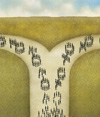October 29, 2012
A Real Harvard Man: Phillis Wheatley

Dave Cutler for the Chronicle
Purchased when she was still a child, Phillis was schooled in the classics by Mrs. Susanna Wheatley's daughter, Mary. So gifted a student was Phillis that she was soon turning out remarkable poems, such as her paean "To The University Of Cambridge, In New-England," in which she urged Harvard students to avoid sin.

The Gender Issue Highlights
As I read that volume when I was a first-year graduate student at Harvard, my intellectual love affair with Phillis Wheatley began. Curious about the men who had attested to her genius, I wrote a seminar paper about their testimony. A few years later, on the occasion of Harvard's 350th anniversary, in 1986, I joined in an editing project that culminated in Blacks at Harvard (New York University Press, 1993), a scholarly collection that included Wheatley.
One wonders what Wheatley, were she able to return to Harvard some 240 years after she was claimed as legitimately learned, would make of an institution so changed. With the exception of a few 18th-century buildings still encircling Harvard Yard, the campus would look alien to her. If she were to walk into the buildings erected long after her death, however, she would find a well-worn trail of intellectual achievement left by the now large number of African-Americans who have passed through Harvard's libraries, classrooms, and departments.
Outside the door to the African- and African-American-studies department, Wheatley would come upon a bust of the university's first black Ph.D., W.E.B. Du Bois. Walking past his cerebral gaze, she would find not only Du Bois's modern counterpart, Professor Gates, but leading black scholars such as Evelyn Brooks Higginbotham, chair of the department. Inside University Hall, she would find an African-American woman, Evelynn M. Hammonds, serving as dean of Harvard College. And in the offices of the Harvard Law Review, she would learn of its first black president, Barack Obama. If the Harvard campus were a palimpsest, Wheatley would find narrative on top of narrative, each one contributing to the rich history of an institution strengthened and shaped by its black graduates.
Her portrait belongs among those of the white men in the Harvard Faculty Club.
Decades ago, I was made painfully aware of the "dead white men" on the club's walls when I invited a brilliant Harvard College undergraduate from the rural South to have lunch with me at the club.
My invitation followed a painful moment in a class I was team-teaching. All of the students except this young man were white and from exclusive high schools. While the entire class had a keen interest in African-American literature, a crisis unfolded when we read Zora Neale Hurston's 1937 novel, Their Eyes Were Watching God. A student from New York volunteered to read from an additional chapter she had written in high school. Alas, the student's chapter was written in dialect that sounded all wrong coming out of a white person's mouth. The African-American student erupted, offering a moving account of the slights he believed he had been suffering from his classmates. The author of the chapter began to cry. A second white student accused of racism soon joined her. Horrified, my teaching colleague and I looked at each other across the seminar table: We knew we had healing work to do.
The next day was when I took the African-American student to lunch at the Harvard Faculty Club. As I walked into the main dining room with this young man, whose pain was palpable, I saw with new eyes the portraits of white New England clergy. Abolitionists or not, they seemed to stare at us from every wall.
While the students in that class, one of the best classes I have ever taught, made beautiful peace with one another, I am, decades later, still searching for Phillis Wheatley at Harvard. Thus the real purpose of this article, which might have been subtitled, "An Open Letter to Drew Gilpin Faust, President of Harvard University":
Dear President Faust,
Would you—the first woman to serve as president of Harvard and the same conscience-driven 9-year-old who, in 1957, wrote a letter to President Dwight D. Eisenhower decrying segregation—please commission an oil portrait of Phillis Wheatley to hang in the Harvard Faculty Club? The artist you select would have for inspiration only the one portrait of Wheatley that was drawn from life, but that image, an engraving that accompanies her 1773 book, is remarkable. Depicted quill in hand, Wheatley is there the model of a Harvard scholar.
If only Wheatley, once the portrait were complete, could join you at the faculty club for its unveiling! I imagine that the two of you, who have so much in common, would like each other immediately. Even when the two of you were young, neither of you ever hesitated to share your views with and of men in high places. I think of Wheatley's 1775 poem "To His Excellency General Washington," or of your letter to Ike, in which you wrote, "Please Mr. Eisenhower please try and have schools and other things accept colored people."
I could imagine Wheatley, given her lifetime of defying the intellectual expectations of the white men who surrounded her, and you, given your career as a historian studying slavery, meeting for tea at the Harvard Faculty Club. Afterward, you would take Ms. Wheatley into the Reading Room to show her the painting. She would lean her diminutive frame toward it and find a plaque—and here is my final suggestion—with words that have taken too long to appear: "Phillis Wheatley (1753?-1784), Doctor of Philosophy, Honoris Causa, Harvard University, 2013."



No comments:
Post a Comment